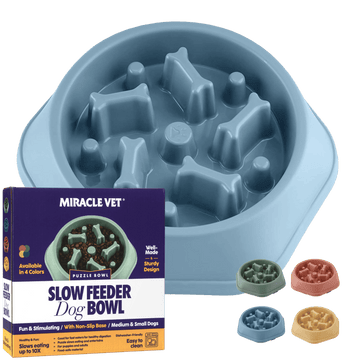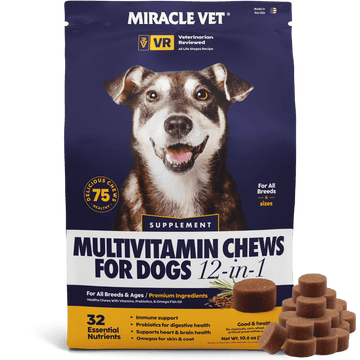Is your dog at the right weight?
3 simple steps to find out
We all want our pets to be happy and healthy. Maintaining a healthy weight for dogs is an important part of the equation. Keeping your furry friend at their ideal weight can mean a longer, healthier, and more playful life with fewer health problems like heart disease, diabetes, and arthritis.
It can be a little confusing to know whether your dog’s weight is at the right level. What exactly does a healthy weight look like? Don’t worry — we’ve got you covered.
To make things simple, we’ve included a handy infographic at the end of this post. But first, let’s walk through three easy steps to help you figure out if your dog’s weight is where it should be.
Three simple steps
Step 1: Feel the ribs
Start by gently running your hands along your dog’s ribs. Are the ribs easy to feel, or are they covered with a noticeable layer of fat? The amount of fat covering the ribs can give you a quick idea of whether your dog might be underweight, overweight, or just right.
Step 2: Look from above
Now, take a look at your dog from above. Can you see their ribs, pelvis, or vertebrae? A healthy dog will have a visible waist—their torso should narrow just after the ribs. If the waist isn’t visible or if the bones are very prominent, it’s time to take action.
Step 3: Look from the side
Finally, view your dog from the side. You should see an “abdominal tuck” — the abdomen should curve upward near the rear legs. If your dog’s abdomen is sagging or if their bones are too easy to see, it could be a sign they’re carrying too much or too little weight.
What to watch for
Signs your dog is overweight
If your dog’s ribs are hard to feel because of fat, they’re probably overweight. Missing a visible waist or abdominal tuck are also clear signs. At more severe levels of obesity, you might notice fatty deposits on their neck or limbs, and their abdomen may appear swollen. If you spot these signs, it’s time to help your pup shed some pounds. Check out our tips for shedding extra pounds here.
Signs your dog is at their ideal weight
So what’s the ideal? What should you be shooting for?
If your dog is at their ideal weight you can feel their ribs with a little fat covering them — not too much and not too little. They should have a visible waist and an upward abdominal tuck. Keeping your dog at a healthy weight will help them stay active, energetic, and free of many common health issues.
Signs your dog is underweight
If your dog’s bones are not just visible but prominent, they may be underweight. Check their ribs and pelvis specifically. Loss of muscle or very little body fat are also signs of an underweight dog. Keep an eye on their waist and abdominal tuck. If these are exaggerated, it could be a sign of malnourishment. Learn more about the causes of weight loss.
Different breeds can have slightly different standards for what’s “normal,” so be sure to consider your dog’s breed when assessing their weight. If your dog is underweight, you’re not alone. It happens more often than you might think. The good news is there are easy and healthy ways to help your dog gain weight without resorting to empty calories. You can make changes to their exercise routine, and you may want to add a weight-gainer liquid to their food or water or high-calorie treat to support them.
We hope this post has helped you understand how to determine if your dog is at their ideal weight. Remember, keeping them at a healthy weight is one of the best ways to ensure they live a long life.
And don’t forget — we’ve included an easy-to-use infographic at the end of this post to make evaluating your dog’s weight even easier. Here’s to keeping your dog healthy and happy!












